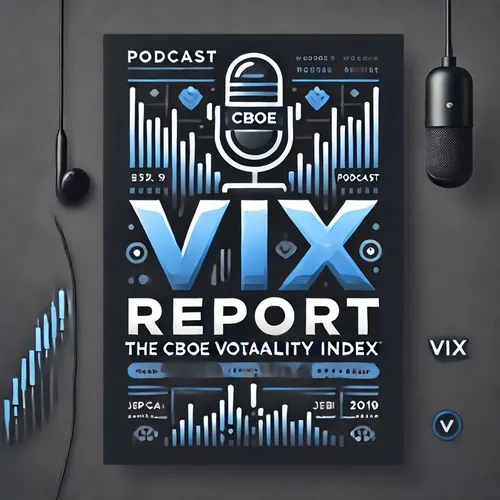VIX Jumps 7.26% as Volatility Expectations Rise Ahead of New Week
- Author
- QP-1
- Published
- Tue 12 Aug 2025
- Episode Link
- https://www.spreaker.com/episode/vix-jumps-7-26-as-volatility-expectations-rise-ahead-of-new-week--67341191
According to the Cboe VIX dashboard, the Cboe Volatility Index (VIX) is currently showing a sale price of 16.25, reflecting a percent change of +7.26% since the last reported level. The Cboe dashboard time-stamp indicates this snapshot as of August 12, 2025, 12:31 AM EDT. YCharts, which mirrors intraday Cboe data, likewise reports VIX at 16.25, up from the prior close of 15.15, a +7.26% move.
Context and factors behind the move:
- The jump from the previous close (15.15 on Friday, per FRED’s VIXCLS daily close series) to 16.25 suggests a pickup in implied volatility expectations heading into today’s session. FRED’s latest close data show VIX easing into Friday after a midweek pop last week, so today’s uptick retraces part of that decline and puts VIX back into the mid-teens.
- Underlying drivers typically include shifts in S&P 500 options demand for protection, macro catalysts on deck, and overnight headlines. When VIX rises, it often reflects increased buying of put options or wider option pricing around anticipated news or data.
- Near-term curve context: the 3-month VIX (VXV) closed Friday at 18.70 according to FRED, leaving a modest term structure premium over spot VIX. With spot rebounding to 16.25, the curve remains in contango but slightly flatter than at Friday’s close, consistent with a modest pickup in near-term risk premium.
Recent trend:
- Over the last week of closes, VIX declined from 17–18 midweek to 15.15 into Friday, then bounced to 16.25 today. That pattern suggests ebbing realized volatility late last week followed by renewed hedging or uncertainty to start the new week.
- On a one-year view, today’s 16-handle remains below last year’s levels around the low-20s, indicating that while risk sentiment has firmed compared to last year, the market still prices occasional bursts of uncertainty.
What to watch:
- Incoming macro data, earnings updates from mega-cap leaders, and policy headlines can quickly influence S&P 500 option pricing and the VIX.
- The VIX futures curve (as listed on Cboe Futures Exchange) remains a useful gauge of whether today’s bump is expected to persist; a steepening curve would imply markets see elevated volatility lasting longer, while a quick reversion would indicate a short-lived hedge demand.
Sources: Cboe VIX dashboard (indices dashboard for VIX sale price and percent change), YCharts VIX indicator page (current level and daily change), and FRED (CBOE Volatility Index: VIXCLS and CBOE S&P 500 3-Month Volatility Index series for recent daily closes).
Thanks for tuning in, and come back next week for more. This has been a Quiet Please production, and for me check out Quiet Please Dot A I.
For more http://www.quietplease.ai
Get the best deals https://amzn.to/3ODvOta
